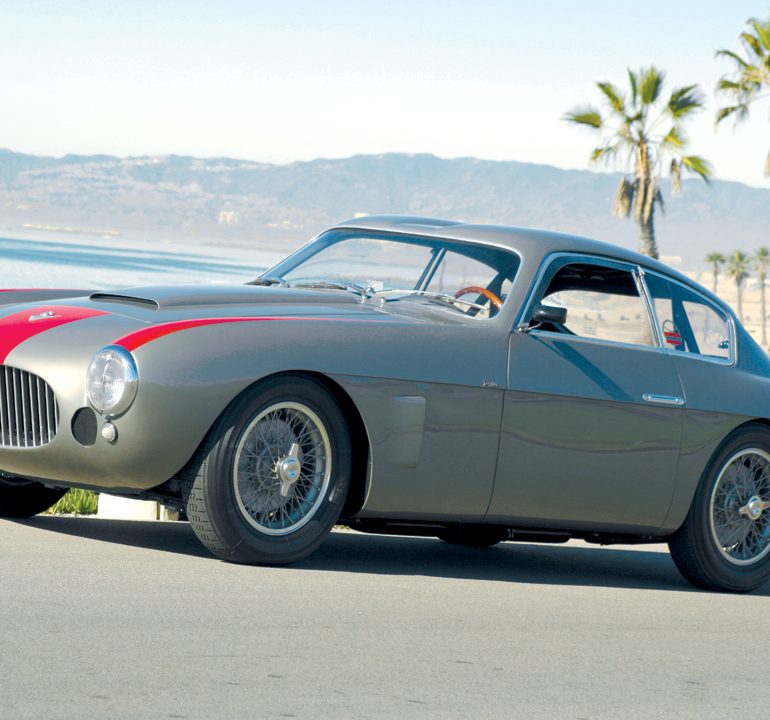1954 Fiat 8V Zagato
If you lived through the ’60s and ’70s, then Sunset Boulevard, in Southern California, likely holds some meaning for you. Whether through your own experiences or through the words of Jan and Dean’s famous “Dead Man’s Curve,” cruising Sunset Boulevard conjures images of the California car culture. So what connection, might you ask, could there be between Sunset Boulevard and the famed Italian roads of the Mille Miglia and the Targa Florio? Well, that’s an interesting story.
Best laid plans…
During the 1948 Geneva Motor Show, executives from FIAT met to work out the specifications for a new 1400 sedan. FIAT’s commercial director Luigi Gajal de la Chenaye wanted the new sedan to be larger and more luxurious than FIAT’s previous sedan offerings. Many at FIAT felt that the financial future of the company lay with selling cars in America, which they in turn believed meant that these new cars needed to be larger and more luxurious to satisfy American tastes. However, the group also felt that in order to build a larger sedan, FIAT would also need a larger powerplant—something more along the lines of a 2-liter engine. While the group felt strongly that they needed a larger displacement engine, they also believed that it needed to be compact, in order to provide them greater flexibility in various installations and applications. As a result of this meeting, FIAT chief engineer Dante Giacosa was directed to begin working on a V-8 engine—a first for FIAT—that featured a narrow, 70-degree-included vee-angle, with a bore and stroke of 72 x 61.3-mm that yielded 1996-cc of displacement.
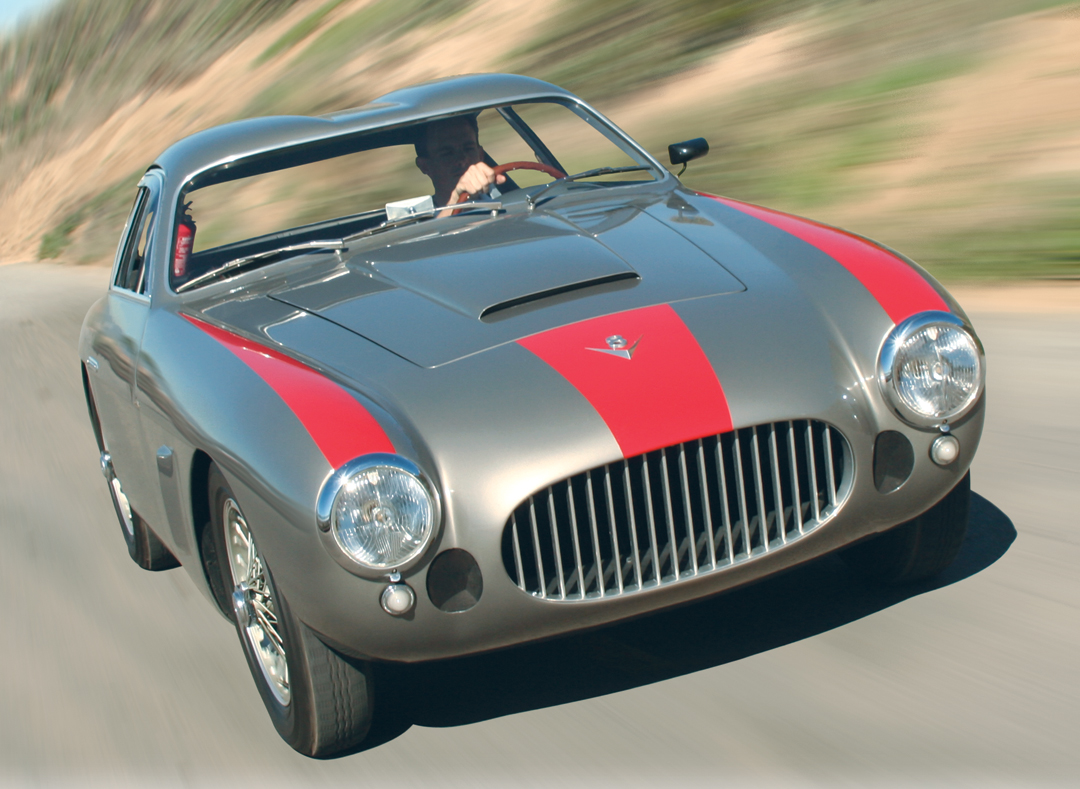
Giacosa sent his final design to the FIAT experimental workshop on December 15, 1948, resulting in the first prototype running on the test bed in November of 1949. This compact, new powerplant, which yielded a little over 100 horsepower, was then mated to a new prototype 1400 sedan body designed by Pininfarina. Sadly, the new sedan was large, heavy, and underpowered, even with the new V-8 engine. Adding insult to injury, FIAT president Vittorio Valletta didn’t like the new sedan, and liked the hard-to-assemble V-8 engine even less; so the project was scrapped and the new 1400 was pushed in an entirely different direction.
Despite Valleta’s rejection, Giacosa and Gajal firmly believed that the little V-8 engine had potential. So, in a bold move that would have made Machiavelli proud, Gajal instructed Giacosa to continue development of the V-8 engine, however, under no circumstances was he to let Valletta find out about it!
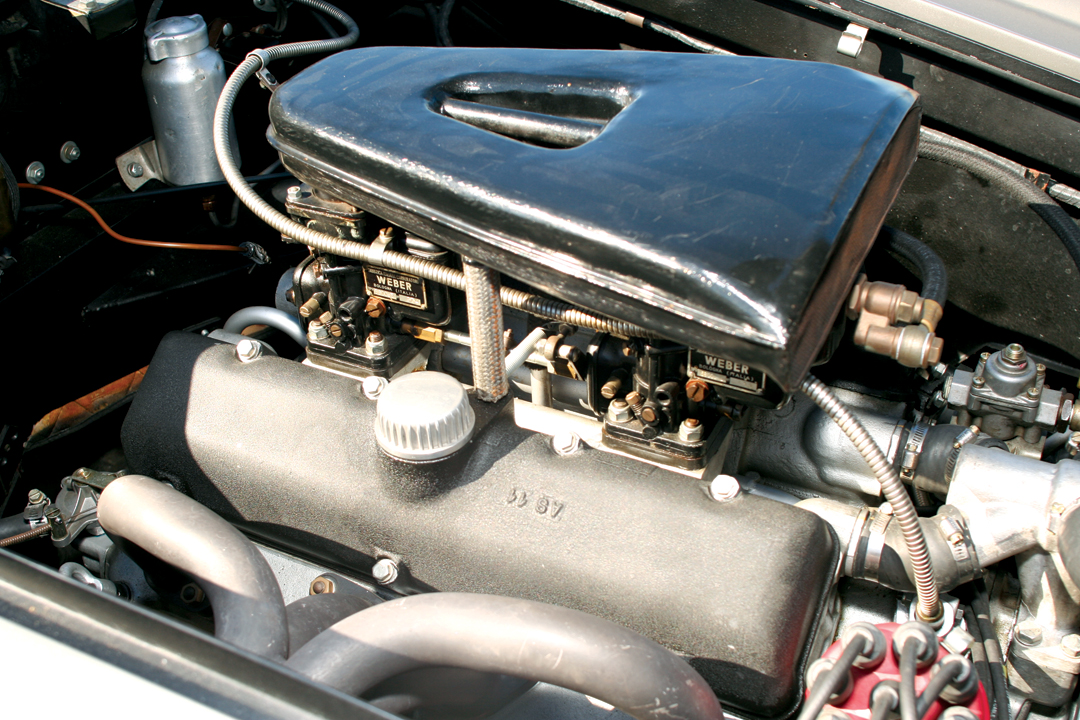
Secret Society
A short time later, at the Ristorante Urbani in the center of Torino, a small gathering of experimental department engineers met for a quiet, after-hours dinner. “Unofficially” the topic of conversation was what changes the V-8 engine would “hypothetically” need to convert it from a low-revving tourer, into a higher-revving sports car engine. By dessert, it was agreed that the block would be redesigned, the external oil pump relocated, the cylinder heads would be redesigned to accept twin Weber downdraft carburetors, and the combustion chambers revised to boost the compression ratio to 8.5:1. While it is unclear how it happened, not long after this clandestine meeting, an engine fitting this same description was surreptitiously tested in the experimental department and found to produce 115 hp at 6,000 rpm and was capable of turning a reliable 7,000-max rpm. Now, if only they had a place to use it.
Fortunately, Gajal and Giacosa’s prayers were answered in the summer of 1951, when the CSAI (the sporting commission of the Automobile Club of Italy) announced a new Gran Turismo Internazionale Championship (GTI) for cars up to 2,000-cc. The pair knew they already had a great engine for this new category, and all they had to do was convince Valletta to build a suitable car. In August of ’51, Gayal and Giacosa proposed that FIAT build a prototype sports car that could use an “improved variant” of the abandoned 2-liter V-8 engine designed for the 1400. This car, they suggested, could be sold to privateers to be campaigned in the new GTI championship against market rivals Alfa Romeo and Lancia, bringing both profit and prestige to FIAT. Valletta and the upper management were hesitant—FIAT had officially turned its back on racing as far back as 1918—but agreed to the production of a single prototype, since the power plant was already developed! However, the management team did not want to overburden the experimental department—which seemed to be working a lot of nights recently—so they agreed, on September 7, that Giorgio Ambrossini’s SIATA workshops would be commissioned to build the prototype. SIATA had much experience building their own racing cars utilizing FIAT components, and so were ideally suited to take on the project.
The OttoVú Is Born
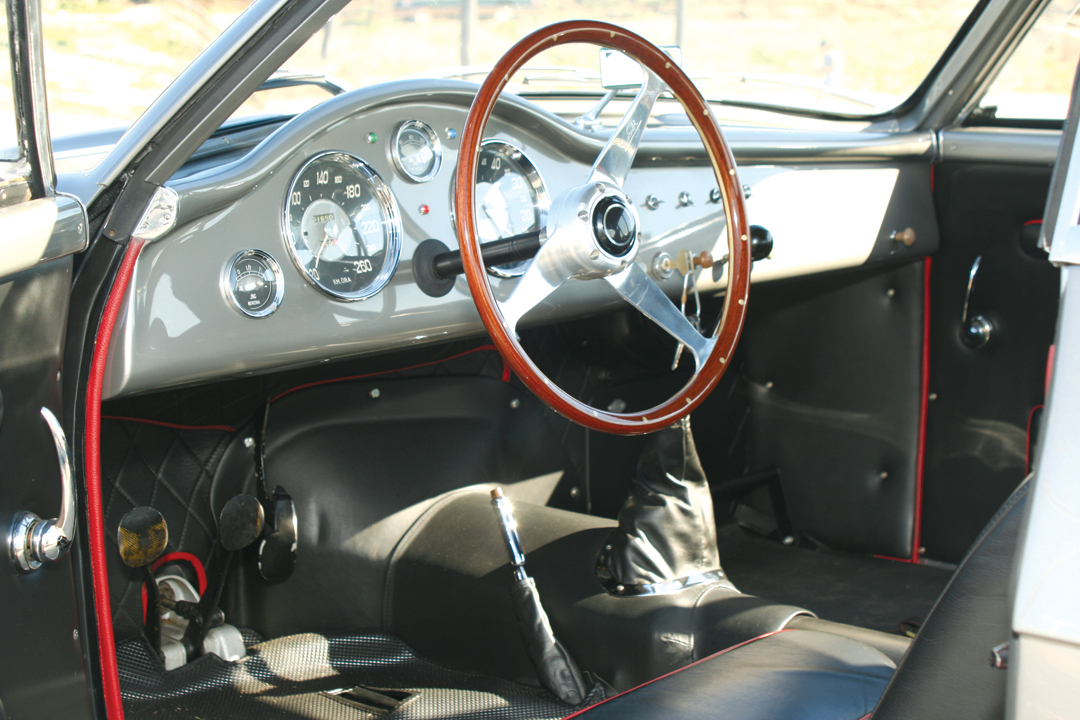
Within FIAT, this new sports car project was known as the 106 Sport. Interestingly, due to its novel engine design—and perhaps the lack of romance of the term 106 Sport—the car was generally referred to internally as the “V-8.” However, some have speculated that FIAT feared that Ford would enforce its trademark on the term V-8, so they turned the name around and made it “8V”—thus the OttoVú (Italian for 8V) was born.
Like the 1400 that gave rise to its power plant, the 8V was designed to have a rigid and lightweight unit body, mounted to a minimal frame. As such, the craftsmen at SIATA used two slim oval tubes, joined at the ends by crossmembers for the rudimentary frame. The flowing bodywork was penned by FIAT’s Luigi Rapi and featured an outer steel skin, which was welded to an inner scuttle that was in turn welded to the basic frame. This lightweight, yet rigid, chassis had a wheelbase of 2,400-mm and a front and rear track of 1,290-mm.
For suspension, Giacosa elected to use independent all around, however, on all four corners he chose to use a setup loosely based on a Dubonnet-style system, where the shock absorbers and springs were encased in an oil-filled chamber. However, unlike the Dubonnet-type system, the FIAT system featured shock and spring units encased in a vertically mounted casting, with unequal length upper and lower suspension arms attached directly to this unit, in such a way that it became a single discreet element that could easily be attached or removed from the frame with just six bolts.
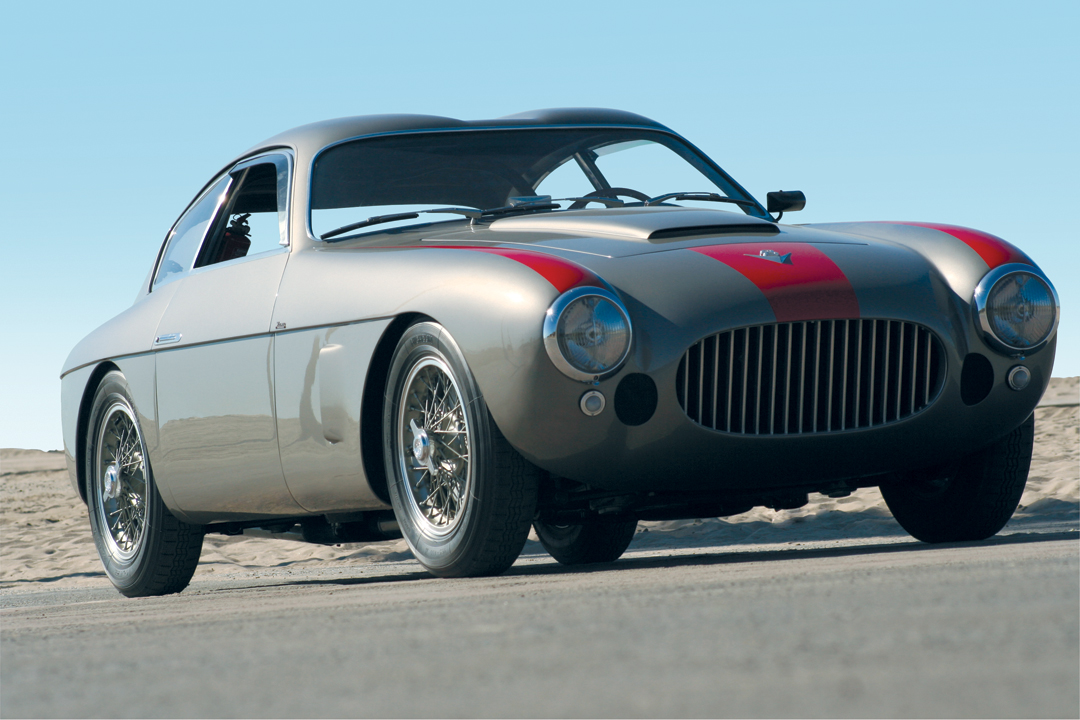
At the rear, the differential unit was solidly mounted to the frame, while the suspension units were bolted to the rear crossmember and benefited from an additional set of telescopic shock absorbers. On the 8V system, which was first developed for the 1937 FIAT Balillas, the geometry of the opposing corner’s control arms is identical, resulting in the outside wheels gaining negative camber during cornering thus keeping the wheels nearly perpendicular to the ground. When completed, the prototype OttoVú, weighed in at 950-kg (2,054 lbs) and, in the hands of former FIAT Grand Prix driver Carlo Salamano, was capable of a top speed of 200-km/hr.
In January of 1952, the fully tested 8V prototype was presented to Valletta and the FIAT management team. Though the car showed great promise, the powers that be were still wary of fully committing to a production run of sports cars, this being such a radical departure from FIAT’s traditional offerings of more utilitarian vehicles. However, perhaps seeing the promotional benefits that motor sport could confer, it was agreed that SIATA could be commissioned to build an additional six “production” models—three of these were earmarked for competition in the Mille Miglia, two for the Geneva and Torino Motor Shows, and one to be used internally for development and experimentation of a longer wheelbase option.
Motor Sport Improves the Breed
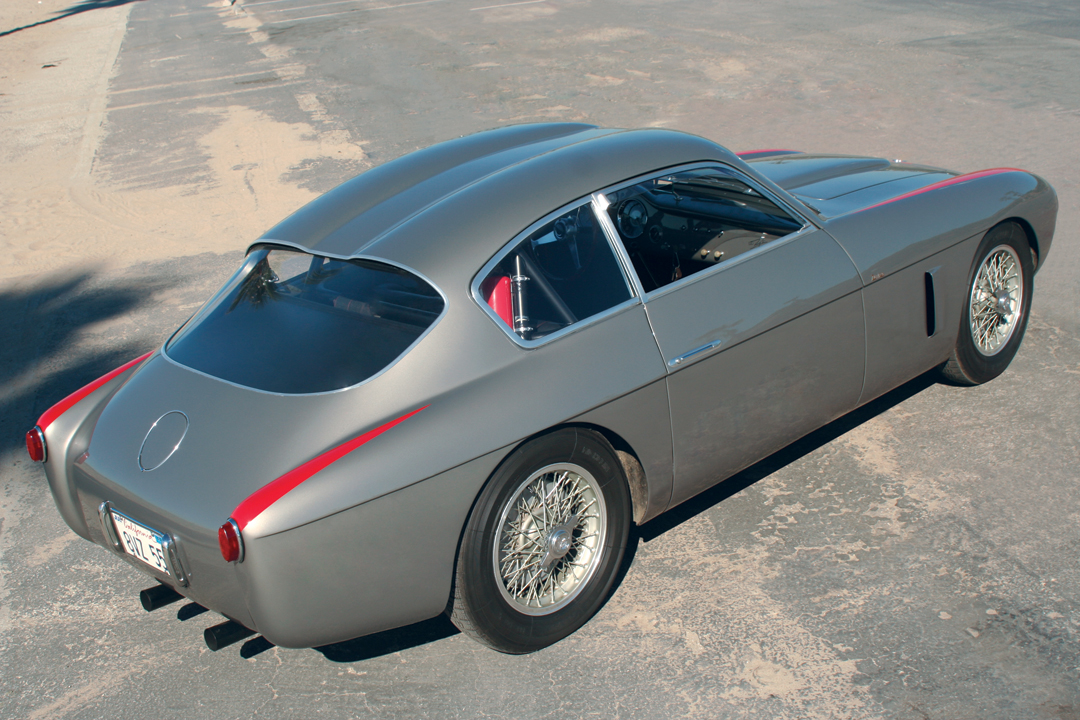
On March 9, 1952, a special SIATA Daina GS—essentially a Daina body with FIAT 8V drive train and underpinnings—was entered in the Giro di Sicilia for Franco Rol and Gino Munaron. In what was deemed to be a good sign for the 8V’s competition prospects, the pair finished a very promising 2nd in class and 12th overall.
With this confidence-inspiring first test out of the way, the FIAT 8V was first unveiled to an astonished public at the Geneva Motor Show on March 9, 1952. Since the entire project had been conducted in total secrecy—including road testing of the prototype atop FIAT’s private Lingotto roof-top test track—the public and the press were startled to see the FIAT stand include a racing-inspired sports car after FIAT’s nearly 20-year absence from the segment. Needless to say it was the star of both the Geneva and Torino shows.
Come May of that year, three OttoVús were prepared for the famed Mille Miglia. These three examples were sold to influential privateers (many of whom were FIAT concessionaires) for competition and were entered for the pairings of Vincenzo Aurrichio/Paolo Bozzini, Supremo Montanari/Montanari, and Diego Capelli/Giuseppe Veronelli. The last was that of Diego Capelli, being the car owned by his uncle Ovidio, who was Milan’s largest FIAT retailer and an accomplished racer in his own right.
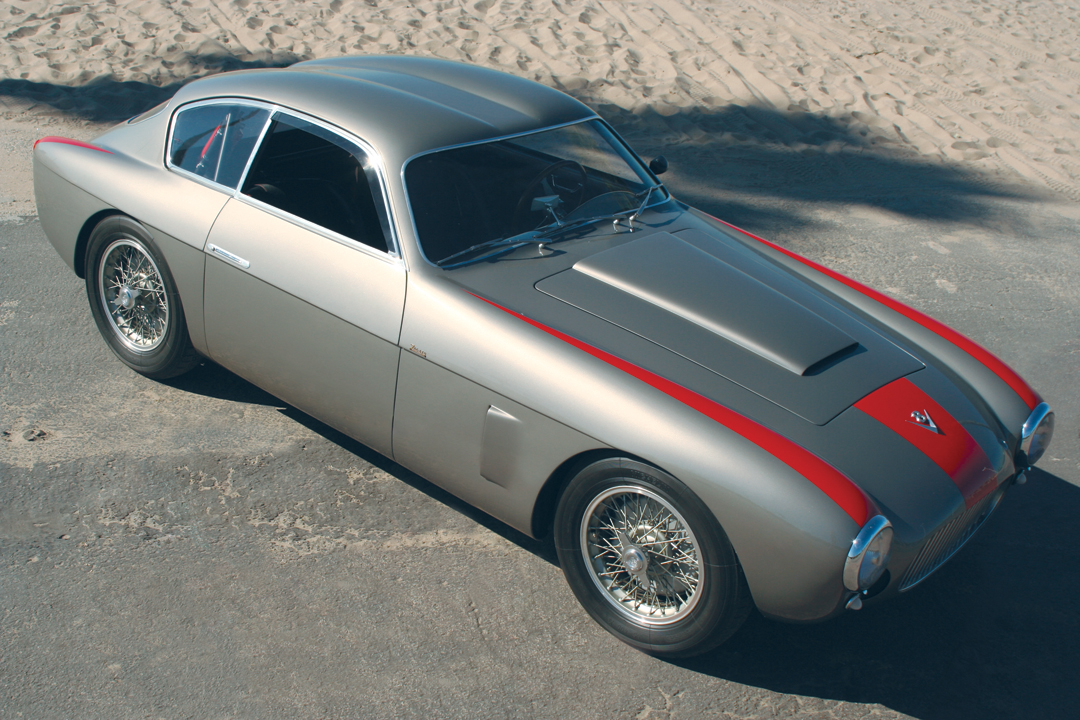
While SIATA’s initial foray in the Giro di Sicilia looked promising for FIAT’s chances in the Mille Miglia, sadly circumstances did not work in the company’s favor. The start of the race saw slippery, rainy conditions in Brescia, which caught young Diego out, just five minutes from the starting platform! The damage from the resulting crash was significant enough to put him out of the race immediately and require extensive body repairs to the new FIAT. Soon after, the team of Montanari and Montanari was also caught out by the conditions, leaving the sole remaining 8V of Auricchio and Bozzini to soldier on to a 15th-place overall finish.
Phoenix Takes Flight
It is often said that everything happens for a reason, and while Ovidio Capelli, may have regretted putting his young nephew at the wheel of his new 8V for the Mille Miglia, the resulting damage ultimately changed the historical direction of the entire 8V line. As a result of his nephew’s disastrous start, Capelli had to rebody his new car…the damage was that comprehensive. While Capelli had the choice of any number of carrozzeria to choose from, in the end he elected to give the job to Ugo Zagato and his son Elio. Zagato had forged a name for himself in the prewar years building gorgeous lightweight bodies for many of the most famous racing Alfa Romeos. In the postwar years, Zagato turned much of his attention to building lightweight racers on small displacement FIAT powertrains. These tiny FIAT specials were so good that they carried young Elio Zagato to several Italian national championships.
Setting to work on Capelli’s car, Zagato peeled off the outer steel skin, and leaving just the bulkhead, crafted a new, aluminum GT bodywork, reminiscent of some of their earlier bespoke Mille Miglia models. This lithe new creation was completed in a mere 15 days and cut nearly 100-kg from the factory 8V’s curb weight.
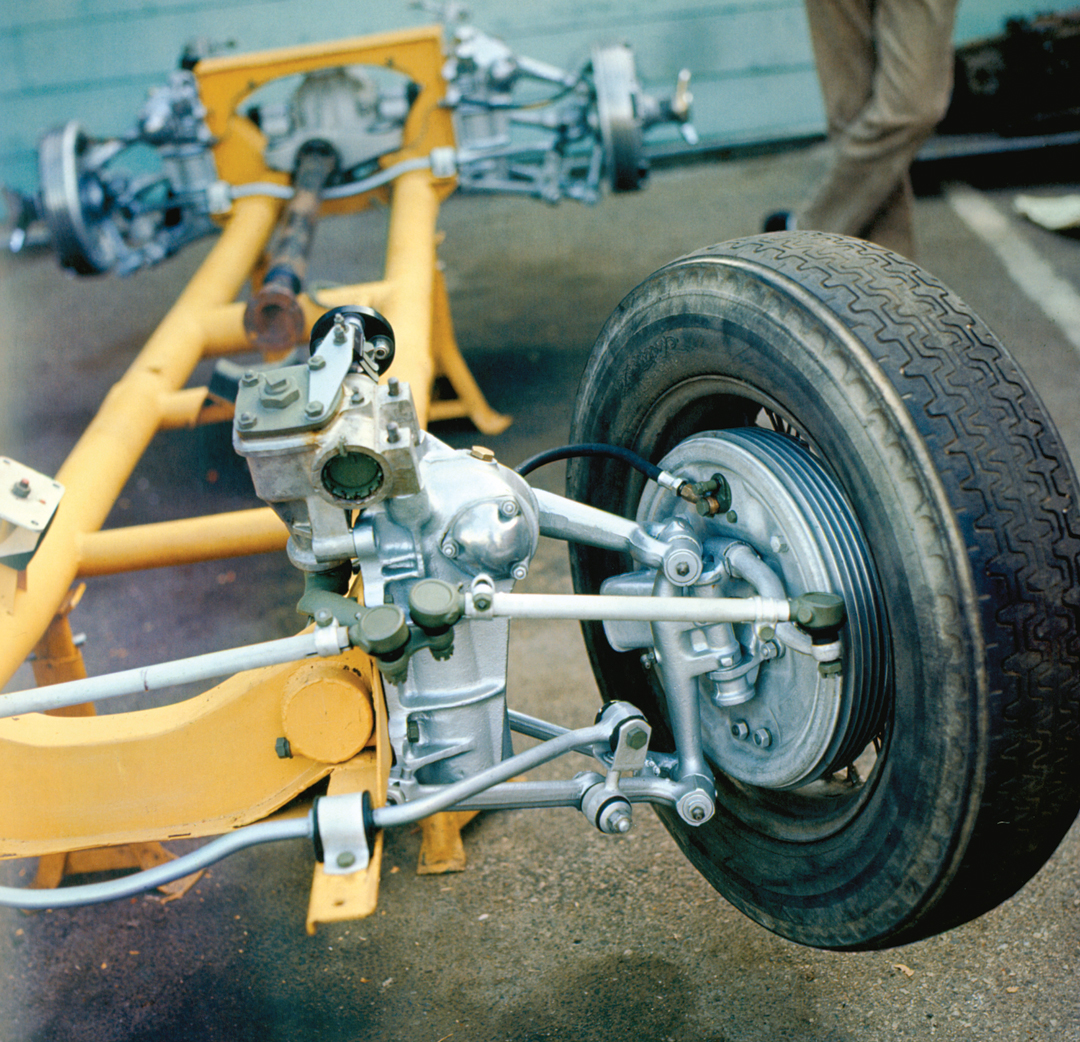
With Zagato’s amazing turnaround time, Ovidio Capelli was able to enter his new FIAT 8V Zagato (Chassis #000002) in the June 1st running of the Coppa della Toscana, where he finished 3rd in class. But a week or so later, on June 12, he entered it in the Giro dell’Umbria where he finished 1st in class, claiming the 8V’s maiden victory. From there, Capelli went on to finish 5th overall in that year’s Targa Florio and to claim a stunning overall victory in the arduous Stella Alpina, making him the 1952 Italian GT2000 champion.
Whether the elder Zagato relished this one-off project for Capelli is unknown. However, what is known is that young Elio took a very personal interest in it. Undoubtedly, Elio saw in the 8V, the opportunity to elevate his own racing career from the smaller displacement categories, up to the more prestigious 2-liter ranks and, with Capelli’s fantastic 1952 performances, saw both personal and business opportunities in the OttoVú. As such, Elio convinced his father that they should purchase three rolling chassis from FIAT and produce their own Zagato version of the 8V. The first of the three chassis were delivered in July 1953, and with input from Rapi on the best way to modify the inner scuttle to accept the aluminum body that Elio helped pen, the first example (chassis #000057) made its debut at the Torino Auto Salon on April 21, 1954.
Win on Domenica, Sell on Lunedi
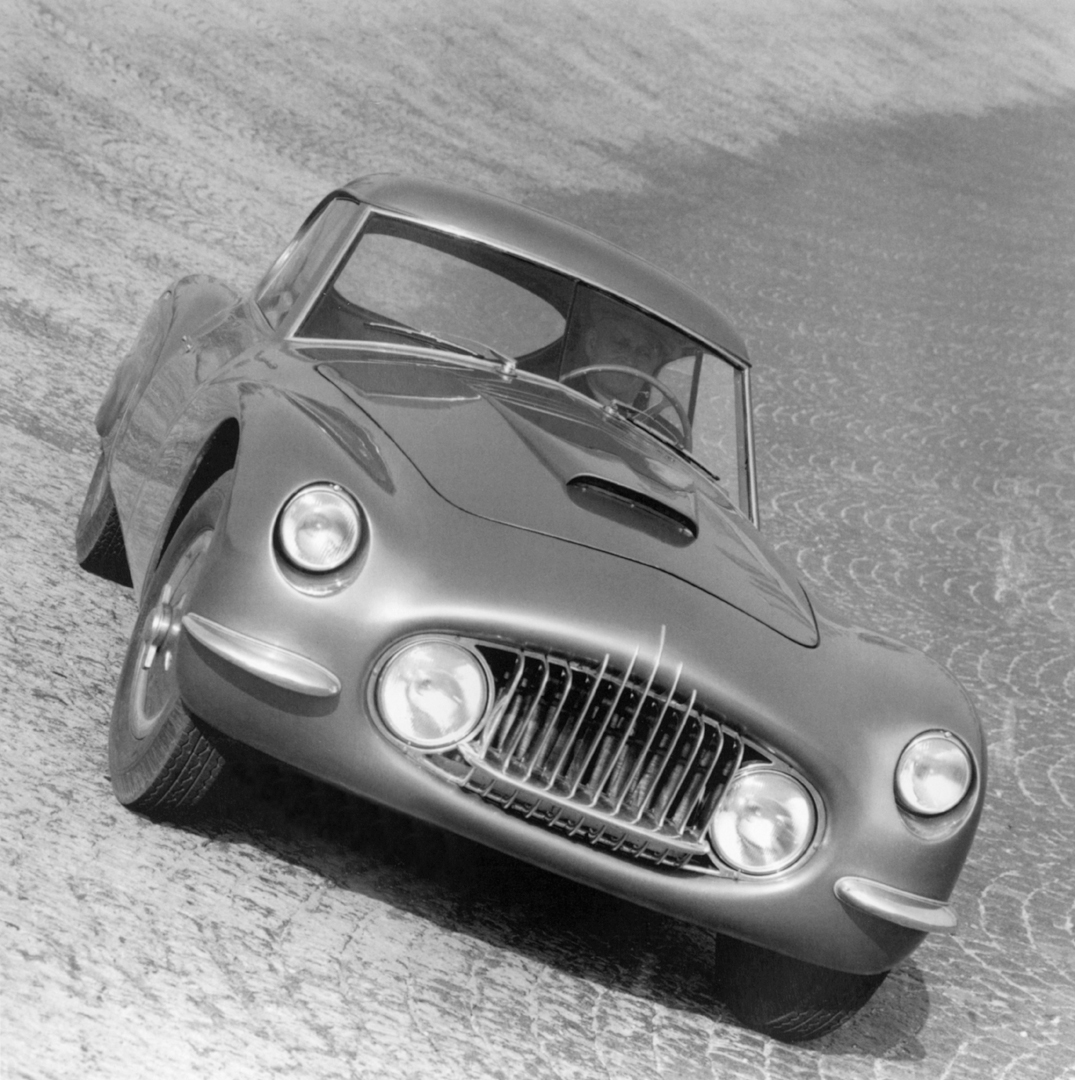
Elio Zagato raced chassis #057 for the first time at the Coppa delle Sei Ore di Orbassano where, right out of the box, he finished an impressive 2nd in class—he couldn’t have been too disappointed, as he was beat by Carlo Leto di Priolo in Capelli’s old Zagato-rebodied 8V! However, Elio’s first overall victory soon followed on May 21, in the prestigious 6 Ore di Bari. Interestingly, Elio’s on-track success in the new 8VZ led to the high-class dilemma that as soon as he won a race, customers wanted to buy that very car right out from under him. This being the case, Elio soon sold #057 and began racing #058; however, it wasn’t long before he had to sell that one as well, such was the competitiveness of the new 8VZ.
With the first three chassis winning so many events and generally being so well received, Zagato committed to production of the 8VZ with another 16 chassis ordered between September 1953 and May 1954. Though it should be noted that the term “production” is used rather loosely here, as that each example had minor variations and differences, depending on the requirements of the customer. These variations included differing hood scoops, radiator grills, air outlets on the fenders, and so on.
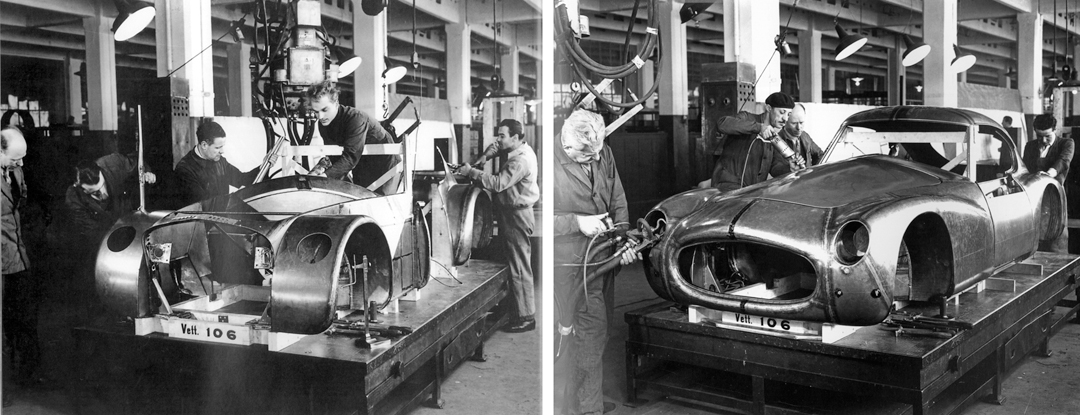
While each example had subtle variations, there was one significant and iconic evolution of the 8VZ on the last six chassis to be bodied by Zagato. Starting with chassis #000084 (the car you see on these pages), the 8VZ was given the now-famous “double-bubble” roofline. Many have hypothesized that this double-bubble roof was designed to accommodate a taller driver, but in fact, when measured, the portion corresponding to the driver and passenger are the same height as the earlier 8VZ. The real reason for the double-bubble was that it lowered the center section of the roof, yielding a slightly lighter and more aerodynamic roofline that, in turn, offered a diminished frontal area to the wind. Since the 8V had limited horsepower, every advantage was exploited to make the car more slippery to the wind. In addition to this revised roof, these last 8VZs also featured a lower, sleeker body with longer tail fins and nose.
Elio Zagato began racing #084, the first double-bubble, on July 10, 1955, in the Coppa d’Oro delle Dolomiti, where he finished 1st in class and 4th overall. On July 31, Zagato entered it in the Giro della Calabria, where again he finished 1st in class and 5th overall. Zagato finished 18th overall in the grueling Stella Alpina, on August 25, but came right back to finish 2nd overall in the September 11th running of the Coppa InterEuropa at Monza. However, on September 25, Zagato and the lithe 8VZ shocked the competition in Germany when they took 1st overall in the AvD-Preis der Avus, on the famed Avus banking. The piece d’resistance, however, would be that year’s Targa Florio, on October 16, when Zagato and co-driver Capelli drove #084 to a class victory, finishing 11th overall.
For 1956, Chassis #084 was sold to Marino Guarnieri, who raced it four times with his best finish being a 4th in the Coppa InterEuropa. But on October 8th, Guarnieri sold the car to a young Italian who was trying to make a name for himself in racing. That young man was a certain Lodovico Scarfiotti.
Stepping Stone to Modena
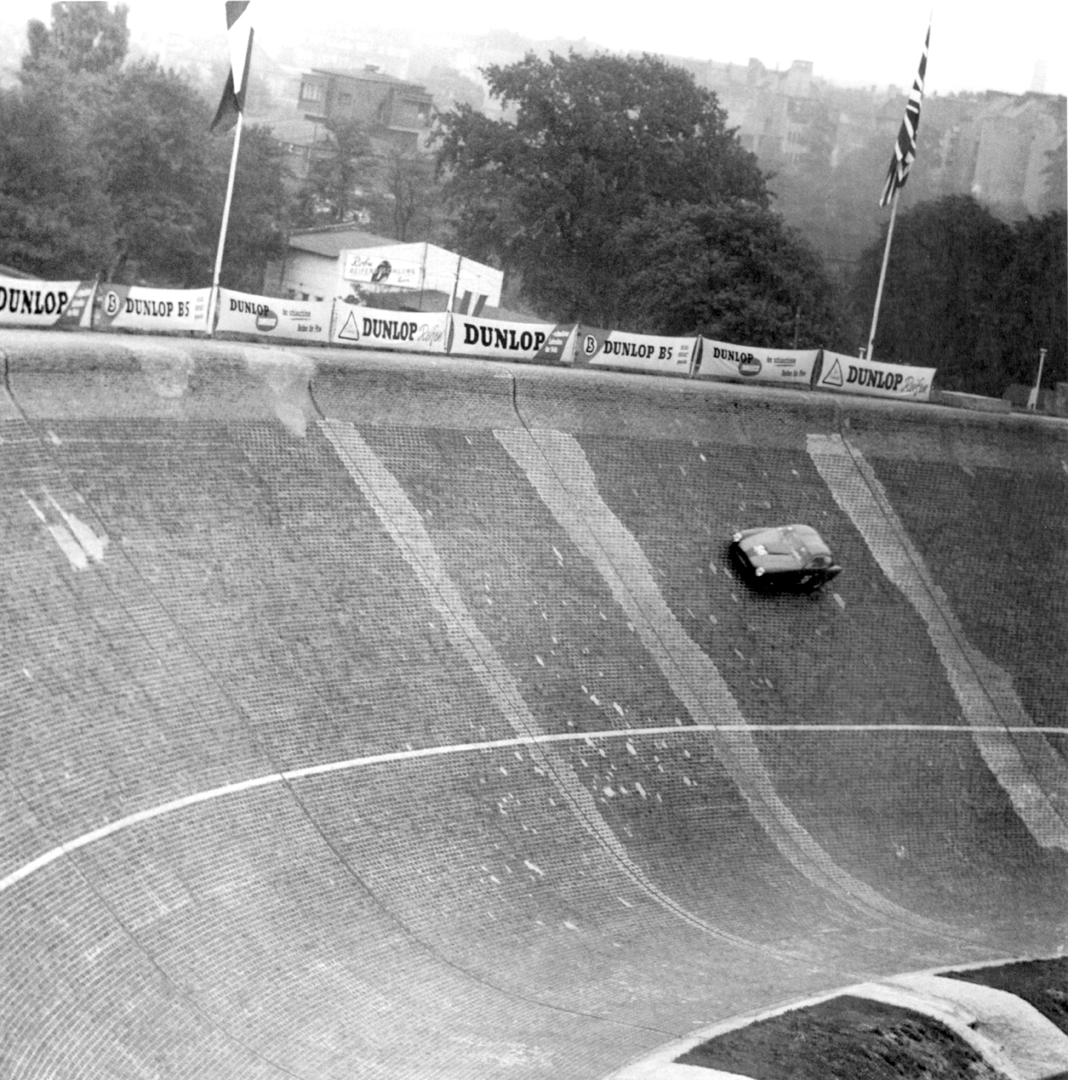
Scarfiotti immediately entered #084 in the October 20th running of the Gran Premio di Roma where he finished 2nd in class, and then promptly followed that up with the November 4th Coppa San Marino where he put the GT2000 category on notice with a 1st in class and 2nd overall.
The 1957 season started for Scarfiotti and the 8VZ on March 31 at the Corsa sulle Torricelle where he finished 2nd in class, followed by the April 28th race in Bologna where he finished 3rd. Scarfiotti entered the May 11th running of the Mille Miglia, but uncharacteristically didn’t finish. However, on August 15, he took 1st in class at the Gainsbergrennen and backed it up with a class victory at the Aosta-Gran San Bernardo (September 1) and 2nd overall in the Coppa InterEuropa at Monza on September 8. With a 2nd in class at Pontedecimo on September 29, 1st in class in the Corsa in salita colli Torinese on October 27, and a 2nd in class in the November 30 6 Ore Esso, Scarfiotti easily claimed the 1957 Italian GT2600 Championship.
With offers now coming in to drive other people’s sports cars, Scarfiotti sold #084 to Aldino Aldini for the 1958 season, but Aldini raced it very little and eventually sold it back to Elio Zagato at the end of 1958. Zagato slightly modified the bodywork with a revised nose, tail, and rear wheel covers, and then entered it in the Coppa Sant’Ambroeus at Monza, taking 1st overall, but as always seemed his fate, by October of 1959, he had sold the car to a Californian named Jack Lewarke. Lewarke shipped the car back to Los Angeles where he soon sold it to a 19-year-old kid named Mike Anderson.
Sunset Strip
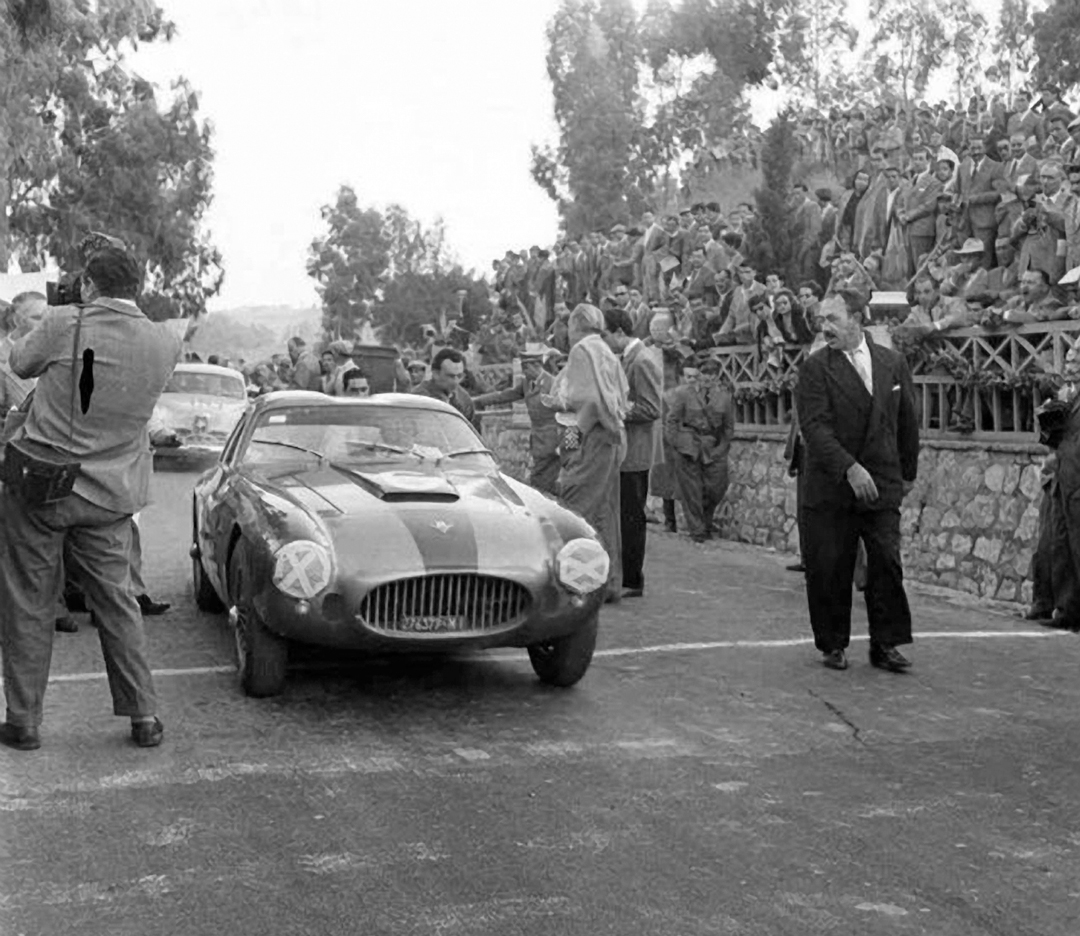
Imagine being a 19-year-old young man in Los Angeles, at the start of the swinging ’60s, and being able to drive up and down Sunset Boulevard in this gorgeous machine.
One day, not long after purchasing the car, Anderson picked up another young man hitchhiking on Sunset Boulevard. The hitchhiker was a car-crazed enthusiast named Anton Krivanek, who happened to also be a huge fan of the 8V. Anderson thought nothing of the chance meeting and went about his merry way, only to lose control of the 8VZ, two weeks later—on Sunset Boulevard—and promptly flipped the FIAT end-over-end, pulverizing the curvaceous body that had carried Elio Zagato and Lodovico Scarfiotti to so many dominant victories, and breaking his back in the process.
Anderson let the insurance company keep the badly damaged car, which eventually made its way to a wrecking yard. At some point in time, the 8VZ’s remains where bought by an enthusiast with the intent of converting it into a Buick-powered special! As such the body was peeled off and thrown away, the running gear was sold, but eventually the enthusiast lost interest in the project.
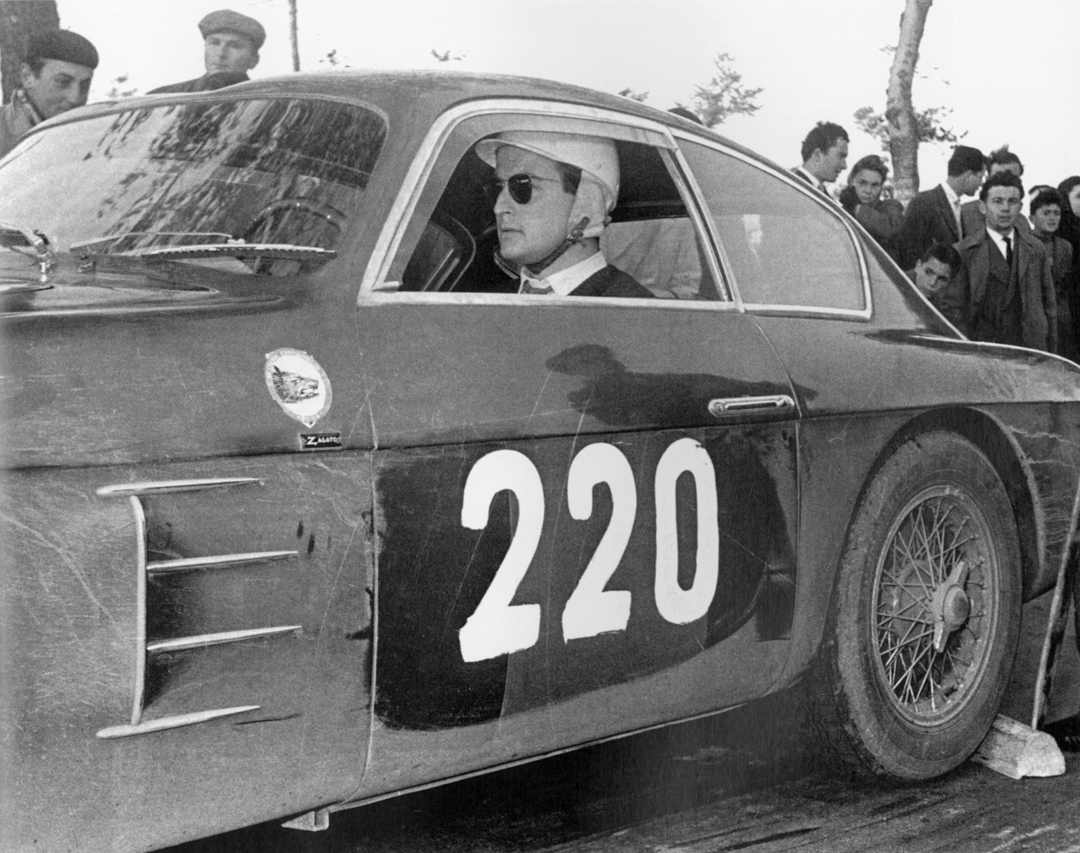
Flash forward to the 1980s, and Krivanek—now a specialist in classic car restorations and the 8V—is visiting another 8V expert, Al Johnston. Krivanek points to an 8V frame on the wall and asks Johnston, “What’s the story with that?” To which Johnston replies, “That was an 8V that was wadded up on Sunset Boulevard, back in 1959.” Krivanek had to smile; he knew all too well which car that was, having hitched a ride in it just weeks before its tragic demise.
Krivanek purchased the frame from Johnston, along with many of the ancillary parts of the car, including the original windshield, which had popped out during the accident and spun across Sunset Boulevard—in one piece! However, Krivanek eventually realized that he was likely never going to have enough money to reunite the original engine with the frame, have a new body constructed, and fully restore the car, so he sold the project to Southern Californian Dan Kolodziejski, who in turn hired Krivanek to return the car to its former glory.
Rebirth
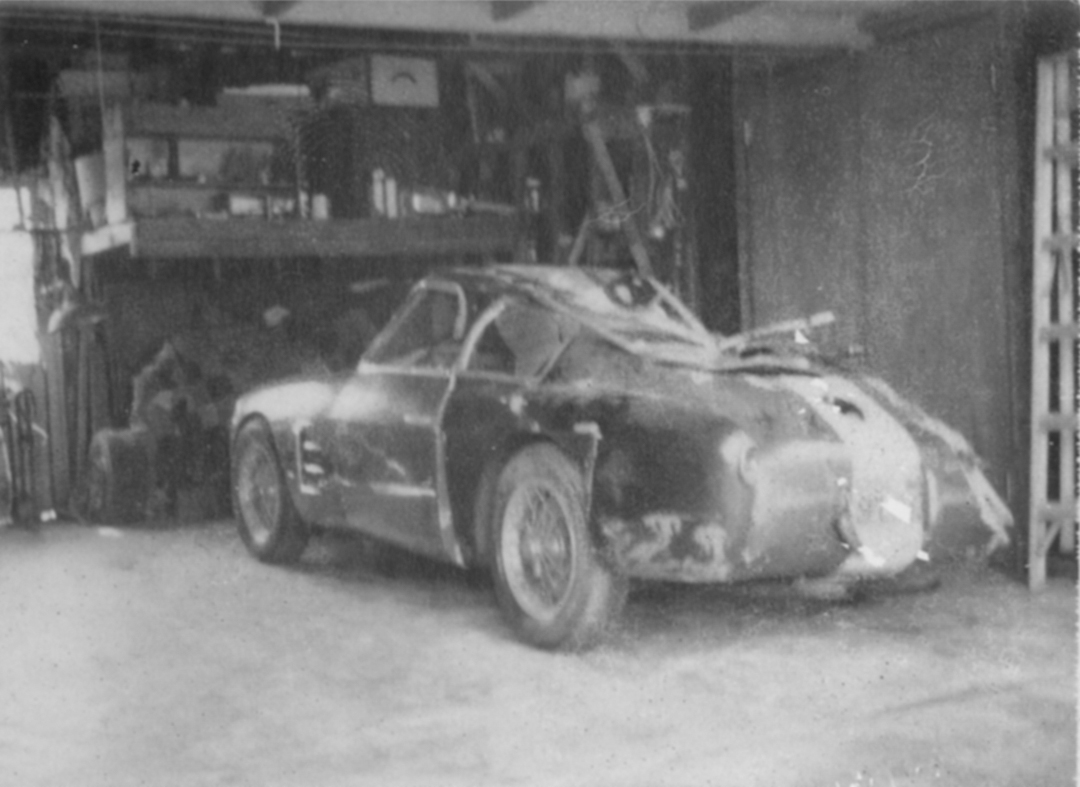
After much searching and a prolonged negotiation, Krivanek was able to locate and purchase the original drive train that came with the car. Since most of the other parts had been saved, Krivanek had everything he needed to fully restore the 8VZ—that is, except the Zagato body. Fortunately, Elio Zagato was keen to see his old warhorse resurrected and so was willing to supervise the project, via the Zagato’s ancestral headquarters in Milan’s Terrazano di Rho.
Through friends at Mazda’s Styling Center in Irvine, California, Krivanek was able to have another surviving 8VZ digitally scanned, so that an exact computer-generated blueprint of the body could be generated. This was then sent to Italy, where in 1999–2000, an exacting new body was constructed and reunited with the now-restored original running gear. Elio himself made sure the car was exactly as he had raced it in 1955, when he won both the AVUS and his class in the Targa Florio.
Driving a Legend
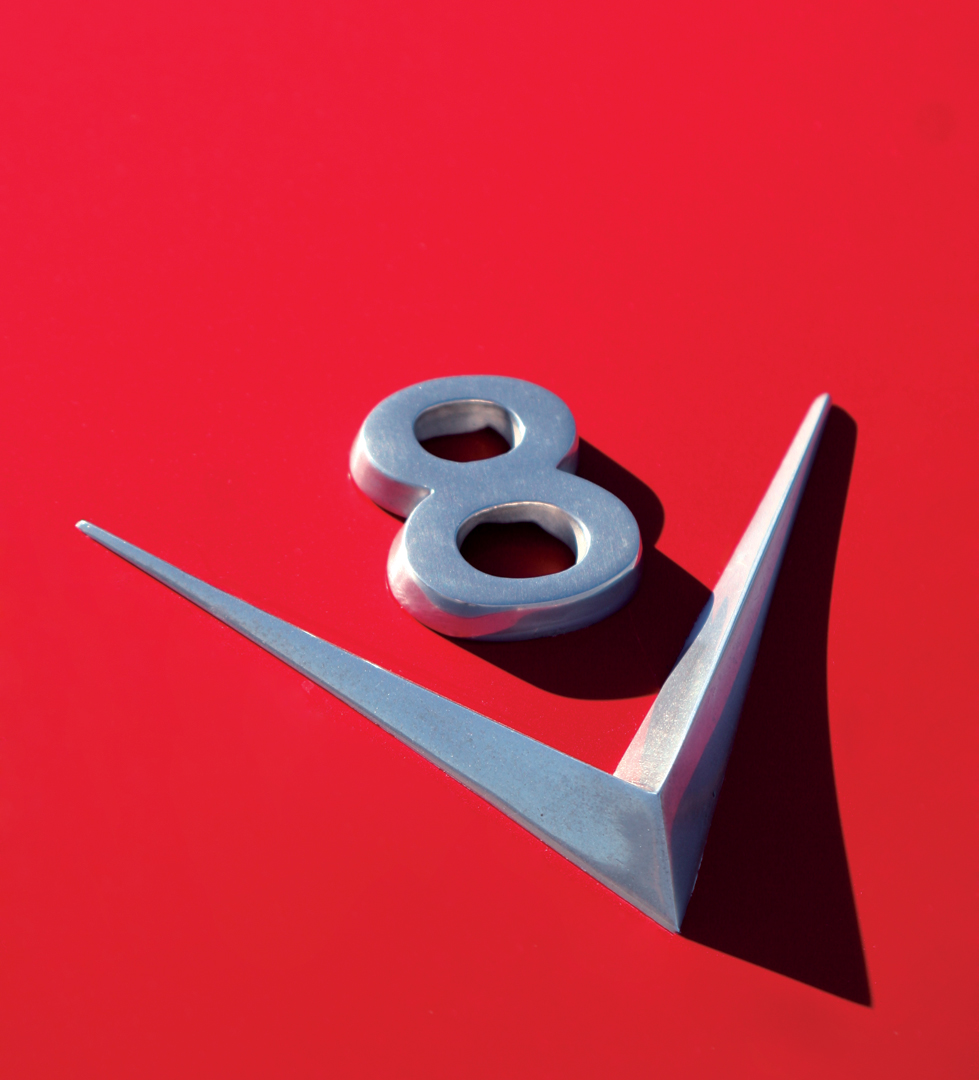
It seemed only too fitting that I should get my chance to drive Zagato and Scarfiotti’s 8VZ in the place where it was ultimately killed and reborn. On a gorgeous, sunny Southern California day—just a stone’s throw from where the car was destroyed—Anton Krivanek and I stood on the beach gazing at the 8V.
Like so many other Zagato creations, the 8VZ has a much more streamlined yet aggressive look, compared to its normal sibling. After having drooled over so many different double-bubbles in my life—Abarth, Aston Martin, Maserati, to name but a few—it’s a little hard for me to believe, as I glide my hand over those sensuous roof bulges, that this very car is the one that started them all.
Everything about the outward appearance of this car was designed with aerodynamic efficiency in mind. Walking up to the driver’s door, I’m greeted by a small button at the end of a flush-mounted chrome strip. Push the button, and the strip pops out to become the door handle—another Zagato hallmark. Sliding into the bucket seat, the interior exudes that wonderful minimalist style that all the great Italian cars from this period seem to possess—quilted leather surface coverings, thin Nardi wood-rimmed steering wheel, and a minimum of black-faced gauges all complete the picture.
Once ensconced behind the wheel, I’m a little surprised at how short the car makes me feel! While I’m 6-feet, the seat sits low in the car and the dashboard binnacle seems kind of tall, leaving me with a feeling of having to look up and over the dash, as opposed to merely through the windshield. Despite the low seating position, the seats are comfortable, with good side support, while the few switches and knobs present are close at hand.
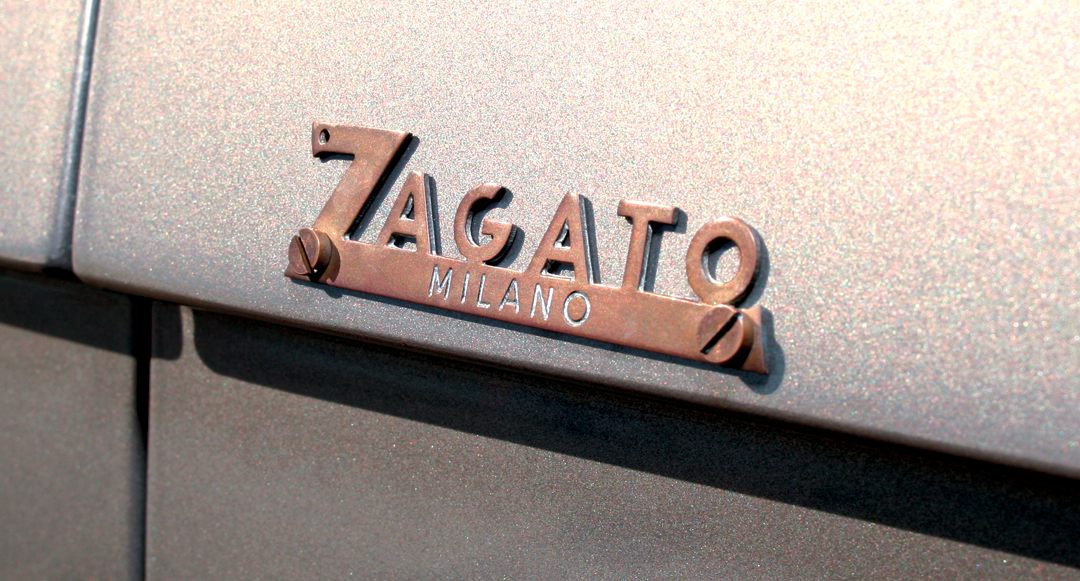
Not knowing what to expect, in terms of starting procedures, Krivanek explains to me that the 8V is a very simple, straightforward car to drive—simply turn the key on, engage the starter, and the 2-liter V-8 burbles to life. With the door closed and my race belts firmly fastened, I dip the clutch, which protrudes up off the floor along with the brake pedal, and grab hold of the surprisingly tall gearshift lever to select first. With a minimum of accelerator pedal, the 8VZ docilely pulls away, without an iota of fuss.
Accelerating along the road that parallels the sparkling Pacific Ocean, the 8V emits a throaty growl that is a little higher pitched than its bigger Italian brethren, yet still has that same inexplicable aural quality that says, “I am an Italian exotic.” Going up through the gears the 8V’s transmission feels solid and precise. At lower rpm—below 4,000—the 8V feels like a 2-liter. Acceleration is adequate, but nothing to write home to Turin about. No, where the diminutive V-8 comes alive is in the band between 4,000 and its 7,000-rpm redline. It’s in this rarefied territory, where the exhaust note is more earnest and the power is more noticeable.
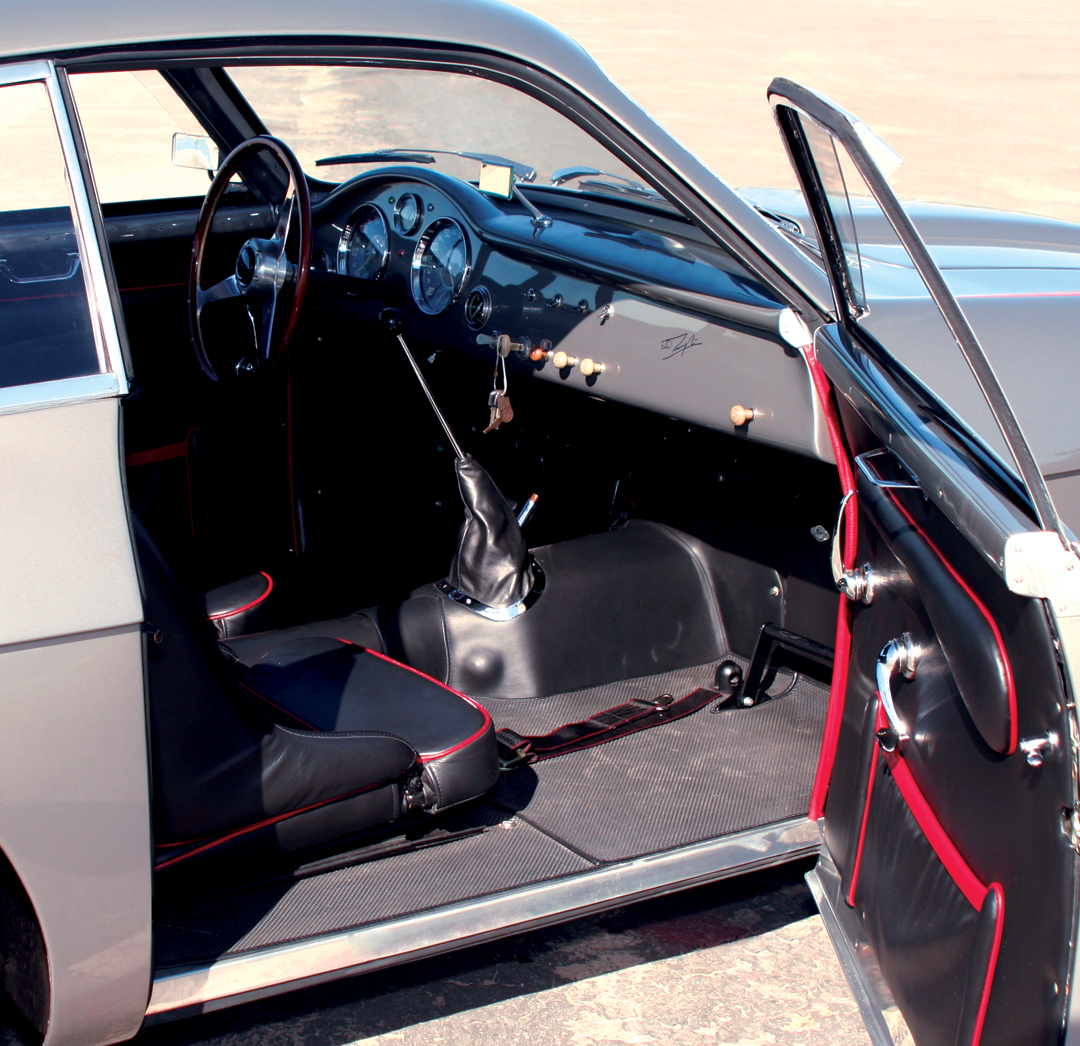
While the engine would undoubtedly have to have been kept spooled up to be competitive in the likes of the Targa Florio, the car’s remarkable handling would have more than made up for the lack of torque. The combination of the unit body construction with the underlying frame makes the 8V feel surprisingly taut. In fact, it’s very easy to forget that this is a car designed and built in the early ’50s, where many competition GT cars were bulky and suffered from maladies such as scuttle shake. In many respects, the 8V is very much like a small displacement formula car in that, due to its lack of torque, the car needs to be hustled through the turns. Fortunately, also like a small displacement formula car, the chassis has great torsional rigidity and excels at hustling through the turns. While the four-wheel drum brakes proved more than adequate to stop the lightweight Zagato on our Southern California test drive, it would be interesting to know how they hold up under 12 hours of continual punishment at something like the Mille Miglia.
After pulling the car back in the parking lot and shutting off the engine, I enjoy one last quiet moment alone behind the wheel. Passing my hand one more time over the smooth Nardi steering wheel, I think of Elio Zagato winning the Targa Florio, Scarfiotti flogging away on the Mille Miglia, and even Mike Anderson cartwheeling, end-over-end, down Sunset Boulevard. All this history occurred in this very seat, within the first car to carry the now-famous Zagato double-bubble…like the Grateful Dead said, “…what a long strange trip it’s been.”
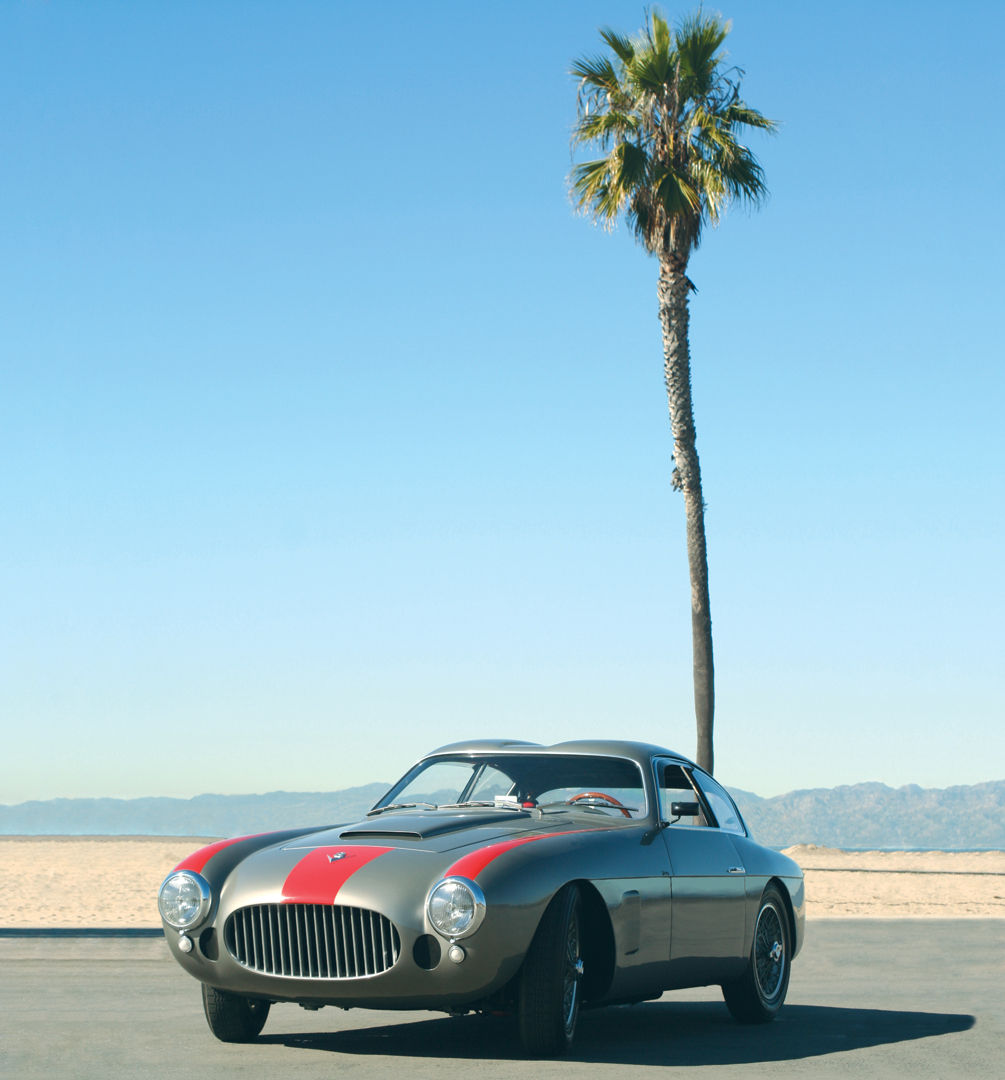
Specifications
Bodywork: Steel unit body, welded on to twin tubular frame.
Wheelbase: 2400-mm
Track: Front 1290-mm, Rear 1290-mm
Height: 1290-mm
Width: 1570-mm
Weight: 950-Kg
Suspension: Front Independent, Dubonnet-style, with anti-roll bar, Rear Independent, Dubonnet-style, with additional telescopic shock absorbers.
Engine: V-8, 70-degree vee-angle
Bore/Stroke: 72-mm x 61.3-mm
Displacement: 1996-cc
Compression Ratio: 8.5:1
Carburetion: Twin Weber 36DC F3 downdrafts
Power: 115 hp @ 6000 rpm
Torque: 1490-Kg/cm
Transmission: 4-speed + reverse, synchromesh on 2–4
Brakes: 290-mm diameter drum brakes
Wheels/Tires: 15” Borrani wire wheels with 165 x 400 tires
Resources
The author would very much like to thank the generous help of Anton Krivanek and Dan Kolodziejski for making the test drive of this unique racecar possible. Additionally, the author would like to acknowledge the tremendous research and help of Tony Adriaensens and his book OttoVú, without which the entirety of this story would have been impossible to tell.
Adriaensens, T.
OttoVú
Corsa Research, Antwerp, Belgium
ISBN 90-801197-2-5


